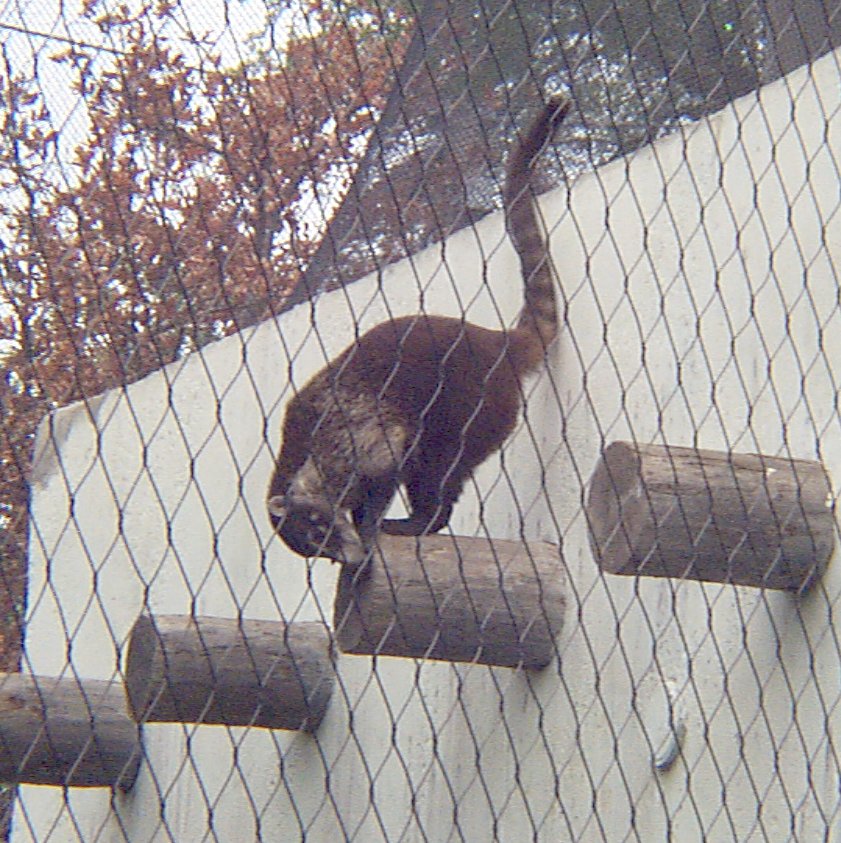| General information:
Coatis are active day and night. They spend
their nights in trees, with several animals sharing the nest. While
the male prefers to travel alone (and may be referred to as the coati
mundi, or solitary coati), the females and their young tend to travel
in bands of 4 to 50 individuals. New born coatis are altricial, or very
immature at birth. The coati is a social animal, so it is very vocal
with a lot of snorts, grunts, screams, whines and chatters. Most of the
day is spent foraging, but during the hottest part of the day, they tend
to nap in trees. Coatis swim well and climb excellently. They use the tail
for balancing on branches and for slowing down the descent of the tree.
|



